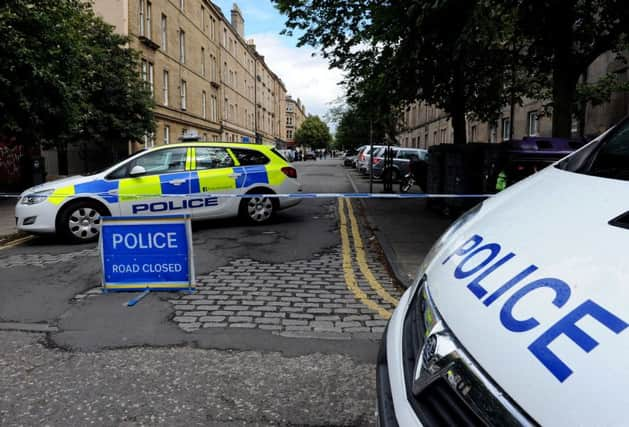Chris Marshall: Policing of the past would cut crime rate


Glaswegians always knew better, coining the phrase “Aw fur coat an’ nae knickers” for a city with an underbelly that belies its reputation for tourism and arts festivals.
A report released yesterday by HM Inspectorate of Constabulary in Scotland confirms that the statistics have finally caught up with that perception.
Advertisement
Hide AdAdvertisement
Hide AdAn inspection of policing in the capital found Edinburgh now has the highest crime rate and the lowest detection rate in the country.
In 2014/15, there were 738.2 crimes per 10,000 of population recorded in the city, compared with the national average of 481.2.
Just 35.4 per cent of crimes were detected, in contrast to 50.4 per cent for the country as a whole.
In short, one is more likely to be a victim of crime and less likely to have that crime solved by the police in Edinburgh than anywhere else in Scotland.
It would be convenient to blame Police Scotland - the country’s fledgling and monolithic police force - for all of Edinburgh’s problems, helping further a narrative which lays the blame for controversies and cock-ups big and small at its door.
Indeed, the Lib Dems said the watchdog’s report was further evidence that the creation of the national force had been “all cloud and no silver lining”. But nothing is ever that simple.
The inspectorate report was at pains to point out that many of Edinburgh’s problems pre-date the creation of Police Scotland in 2013.
Despite its undoubted prosperity, Edinburgh also has its fair share of deprivation - 5.8 per cent of the most economically deprived data zones in Scotland are in the capital.
Advertisement
Hide AdAdvertisement
Hide AdThe city is also the most densely populated police division in the country, with a huge transient population made up of students and tourists.
Add to that those aforementioned arts festivals, which bring an extra 1,000 calls to the police during August alone, and it’s clear the city’s police have unique challenges to face.
But despite all that, there are signs the creation of Police Scotland has helped undermine Edinburgh’s ability to tackle crime.
Nowhere is that more evident than in the city’s housebreaking epidemic, with the number of reported break-ins increasing by 20.8 per cent in 2014/15.
While housebreaking had been a priority for officers in Lothian and Borders Police, a dedicated team was disbanded by Police Scotland in order to put more emphasis on tackling violent crime.
That decision now appears to have been a spectacular mistake, the effects of which have not been entirely ameliorated by the creation of Police Scotland’s Operation RAC.
It is these sort of decisions that have helped further the analysis that policing in Scotland is being hamstrung by a “one-size-fits-all” approach which ignores local peculiarities.
Under pre-2013 legacy force arrangements, Edinburgh’s City Centre Policing Unit (CCPU) received around half of its £1.3m annual funding from the Scottish Government.
Advertisement
Hide AdAdvertisement
Hide AdHowever since the advent of Police Scotland, the money has been absorbed into the government’s block grant to the national force, with the CCPU becoming part of the division’s Violence Reduction Unit.
Edinburgh would benefit from that decision being reversed and more power being devolved from the centre. Being Scotland’s crime capital is one accolade the city can do without.